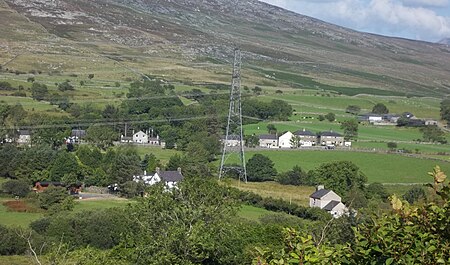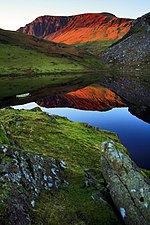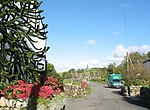Pant Glas

Pant Glas (Welsh for Green Hollow - in Welsh, as in other Celtic languages, "glas" may mean both 'green' and 'blue') is a hamlet on the A487 road in Gwynedd, Wales, in the community of Clynnog. Historically in Caernarfonshire, it is located approximately 10 miles (16 km) south of Caernarfon, 9 miles (14 km) north-west of Porthmadog, and 10 miles (16 km) north-east of Pwllheli. Nearby is the former Pant Glas railway station on the closed Carnarvonshire Railway. The station closed in January 1957. The railway closed in 1964 and has since been replaced with the Lôn Eifion cycle track. Also nearby is the Arfon transmitting station, the tallest structure in Wales. Welsh opera singer Bryn Terfel was brought up at Fferm Nant Cyll Ucha, located just outside the hamlet.In February 2005, the speed limit for the A487 in Pant Glas was reduced from 50 mph (80 km/h) to 40 mph (64 km/h).
Excerpt from the Wikipedia article Pant Glas (License: CC BY-SA 3.0, Authors, Images).Pant Glas
Geographical coordinates (GPS) Address Nearby Places Show on map
Geographical coordinates (GPS)
| Latitude | Longitude |
|---|---|
| N 53.001 ° | E -4.278 ° |
Address
LL51 9DJ , Clynnog
Wales, United Kingdom
Open on Google Maps







